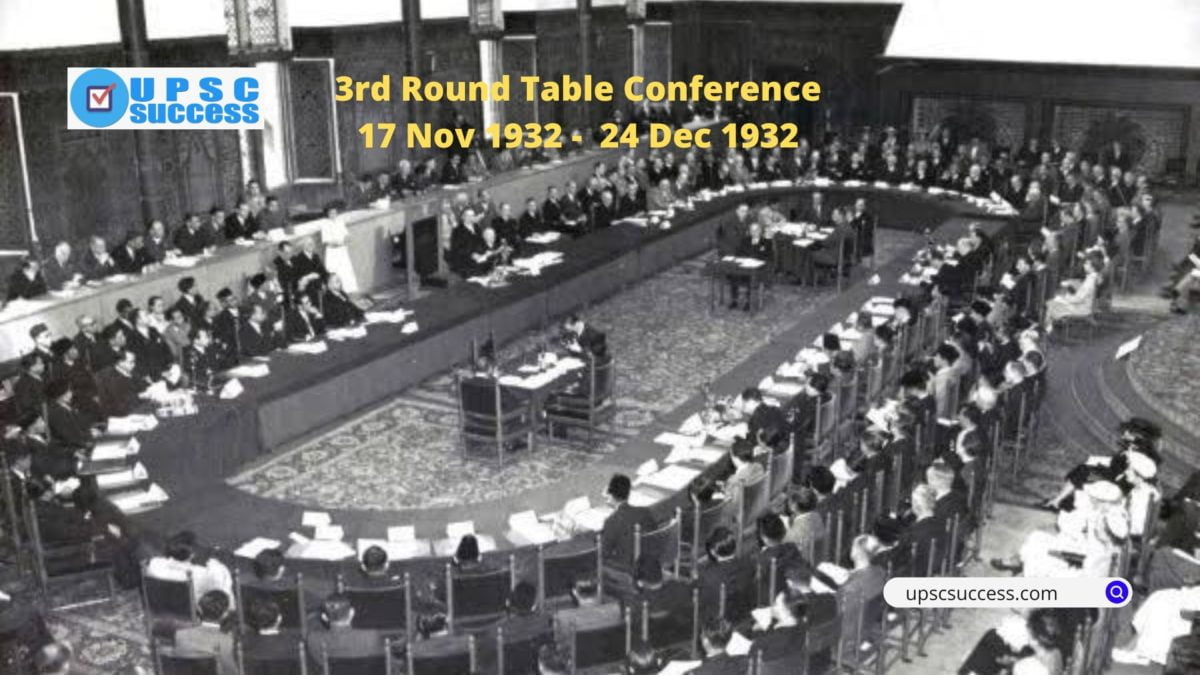The third Round Table Conference, held between November 17, 1932, and December 24, 1932, was not attended by the Indian National Congress and Gandhi. It was ignored by most other Indian leaders.
Apart from princely states representatives like Aga Khan III, B.R. Ambedkar, Muhammad Iqbal, M.R. Jayakar, N.M. Joshi etc. was present.
Again, like in the two previous conferences, little was achieved. The recommendations were published in a White Paper in March 1933 and debated in the British Parliament afterwards based on which Government of India Act 1935 was enacted.
B.R. Ambedkar attended all three round table conferences.
Following the publication of the Communal Award, the third Session, or “the Pocket” R.T.C. met in London to discuss a fixed agenda in private
Also, After the failure of the second Round Table Conference, the Congress Working Committee decided on December 29, 1931, to resume the civil disobedience movement
Participants of the Second Round table conference
- British delegates belonging to various political parties including the British Prime
Minister, James Ramsay Macdonald. - Indian princely states are represented by Maharajas, princes and divans.
- British Indians are represented by:
Indian National Congress (INC) – Mahatma Gandhi, Rangaswami Iyengar, Madan
Mohan Malaviya - Muslims – Md. Ali Jinnah, Aga Khan III, Muhammad Iqbal, etc.
- Hindus – M R Jayakar, etc.
- Depressed classes – Dr B R Ambedkar
- Women – Sarojini Naidu, etc.
- Liberals, Justice Party, Sikhs, Indian Christians, Parsis, Europeans, Anglo-Indians,
industry, labour, landlords, Burma, Sindh and other provinces.
Outcome
After the Third Round Table Conference, the British government prepared a White Paper on the new constitution of India. The White Paper, published in March 1933 contained four major proposals—Federation, Provincial Autonomy (responsible government in provinces), dyarchy at the centre and safeguards that vested special powers in the central and provincial executive. The Paper was criticised by all Indian parties as it fell short of complete independence.
Consequently, a Joint Select Committee was appointed under the chairmanship of the Marquess of Linlithgow. In November 1934, the Committee produced a majority report. On the basis of this report, a bill was introduced in the British Parliament which was passed by a substantial majority. On receiving the Royal assent on 2 August 1955, it became the famous Government of India Act of 1935
FAQs
All three round table conferences were attended by Dr B.R. Ambedkar and Tej Bahadur Sapru.
The Third Round Table Conference was held in November and December of 1932. It took place in London. In March 1933, the conference’s recommendations were published in the “White Paper.”
Due to the absence of most of India’s major political figures, only forty-six delegates attended. The British Labour Party and the Indian National Congress both declined to attend.

